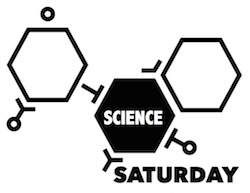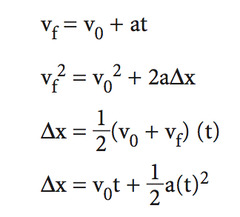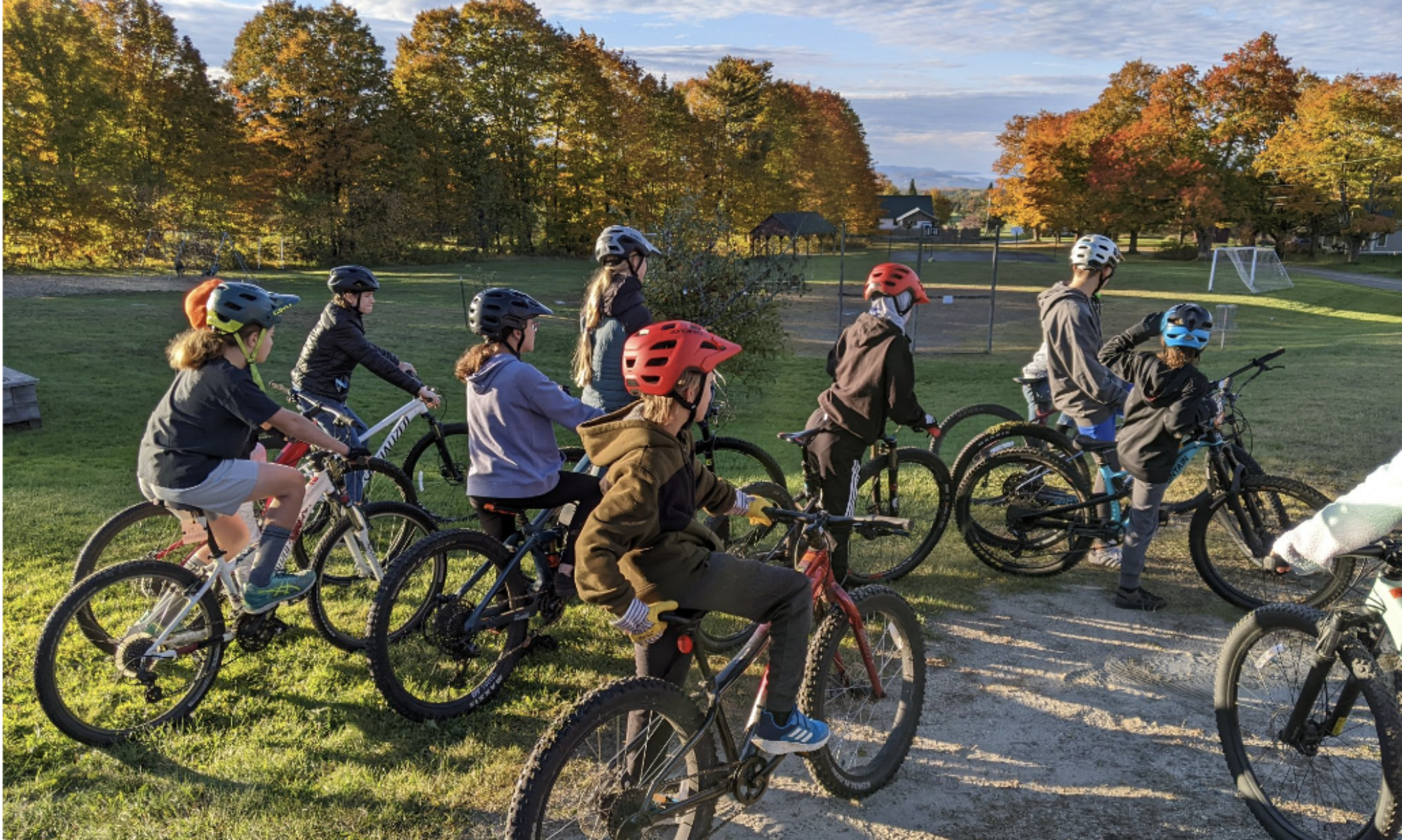 This has been a very interesting week for me, trying to write a post for today. The task actually seemed pretty straight-forward. Audrey had passed along an app for me to take a look at: Monster Physics. A number of folks seem to be thinking about it from an education standpoint. At first blush I was put off by it, and wrote half of a pretty critical post. But every day that has gone by, I have found my position changing. It was a very interesting process, and a good reminder that when we try to think more laterally (a skill the game encourages) our understandings change. So today’s post is about Monster Physics, but its also about the importance of reflection in education, especially in a technology-rich environment where new apps, opinions, devices, and ideas come so fast it can be difficult to give them the time they deserve. Let’s take a look at the app.
This has been a very interesting week for me, trying to write a post for today. The task actually seemed pretty straight-forward. Audrey had passed along an app for me to take a look at: Monster Physics. A number of folks seem to be thinking about it from an education standpoint. At first blush I was put off by it, and wrote half of a pretty critical post. But every day that has gone by, I have found my position changing. It was a very interesting process, and a good reminder that when we try to think more laterally (a skill the game encourages) our understandings change. So today’s post is about Monster Physics, but its also about the importance of reflection in education, especially in a technology-rich environment where new apps, opinions, devices, and ideas come so fast it can be difficult to give them the time they deserve. Let’s take a look at the app.
Monster Physics (iPad $0.99) introduces the player to a sandbox of tools, parts, and possible interactions. ![]() The app supplies a number of challenges for the player to complete – many of which involve a goal of feeding a monster avatar fruits and vegetables. By using different materials and devices, the player directs the monster (or the monster’s lunch) through leveled courses without proscribing one certain way to solve the puzzle. This game design encourages critical thinking while allowing for a multiplicity of solutions that not only beckons many players, but the same player time after time. The game play allows players to create complicated machines that function within a game environment that seems to have a well-designed physics engine. As a pastime, Monster Physics is a great way to spend an afternoon. It encourages critical thinking and develops problem solving skills, both vital to success. I think it would be a worthwhile app for parents to install on the device their children use. But is that all?
The app supplies a number of challenges for the player to complete – many of which involve a goal of feeding a monster avatar fruits and vegetables. By using different materials and devices, the player directs the monster (or the monster’s lunch) through leveled courses without proscribing one certain way to solve the puzzle. This game design encourages critical thinking while allowing for a multiplicity of solutions that not only beckons many players, but the same player time after time. The game play allows players to create complicated machines that function within a game environment that seems to have a well-designed physics engine. As a pastime, Monster Physics is a great way to spend an afternoon. It encourages critical thinking and develops problem solving skills, both vital to success. I think it would be a worthwhile app for parents to install on the device their children use. But is that all?
Initially, I thought yes, but upon reflection, I feel that it actually could fit into a classroom very nicely. The open “build” environment could serve as a station while students are still exploring basic physics concepts. They could also come up with basic questions and devise ways to test them: which is more dense, the metal or the wood? How do you know? This would help bring out those critical pieces. It could even lead to multi-step experimental design. Encouraging students to make predictions and explain what they see happen while including the physics terms included in the “Learn” section would be very valuable. I will say that the “learn” section feels a little underpopulated – there could be many more concepts included (momentum or collisions, for example), and although it provides students with valuable information about the physics concepts they are employing, the information is not vital to a player’s success. It is also noticeably not interactive, in an environment where everything else seems to be manipulable. Hopefully what it does not describe could encourage further exploration.
From a constructivist viewpoint, I like that the player has the opportunity to build and try things out. However, I could imagine a student becoming distracted by making choices related to their avatar or colors of materials, and missing that importance of decisions such as wood or plastic, rope or chain. But on the other hand, learners should be able to personalize their experience. The more I thought about this, the more it seems like a hollow critique. I remember long sessions where students would work to get the paint job on their robot just right, and I encouraged them through the whole process. Why worry that a student might take five minutes to get the monster avatar just right?
I also worried about the app being a stand in for reality, and thought about the importance of actually building things in the real world in science, especially in physics. But that would be a critique of the use, not of the app itself. Yes, as a physics teacher, I had students build machines and contraptions to explore and test ideas. But I also had students use simulations (of which I am a big fan) to develop their knowledge. Why would using this app in the classroom be any different? The app environment allows for a risk-free space to try things out that supports experimentation.

It was when I tried to list improvements could be made to the app that I realized what was wrong. Because here’s what came to my mind – I think that the “Learn” section could be made interactive, so that instead of simply being given a definition and demonstration of force, students could change variables to see how the force changes. I also think that the ability to make changes to materials while the scenario is playing out would be interesting, instead of making the player “pause” reality to change the environment. It would also be nice to be able to measure things such as distance and force. Also, while fun, the inclusion of things like “hoverbots” and “bombs” increase the number of ways the game can be played, they take the game further away from something that helping students understand how objects interact. Basically, I didn’t really want it to be a game anymore.
You see, I had problems with Monster Physics because it isn’t “sciencey” enough. Because I, as an individual, really like science that “looks like” science. And I’ve gotten to share that enthusiasm with many great students. But it isn’t for everyone. We have so many different types of learners in our classrooms. And by only using the learning tools and methods that we like and are comfortable with, we shortchange them. On the flip side we can get so excited about a technique or an app we saw used once that we may try and use it where it doesn’t really belong. It takes time and energy as a teacher to push out of the comfort zone. But it is important to take time to reflect, because it is we develop professionally – and personally.
The truth is, Monster Physics is a fun game with an easy interface built on top of a solid physics engine. And some students, especially students who might be alienated by the super “sciencey” stuff, could use it to get a good understanding of physical interactions. Using it as a station option, or one way that students could choose to complete a lab experiment, or as a way to start conversations about what physics concepts mean… it could really have a place. Let us know down in the comments if you use it, like it, dislike it, you name it. And if you’re using an app in your science class that you think might be great for students who aren’t as excited about science, let us know that one too.


Monster Physics and the importance of careful consideration http://t.co/j0Oo34Tk14
#AppsForKids #UVM #BTV RT @innovativeEd: Monster Physics and the importance of careful consideration http://t.co/IOCkBQm9lL
Monster Physics and the importance of careful consideration http://t.co/M9Y6yrf3r7